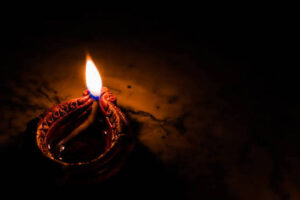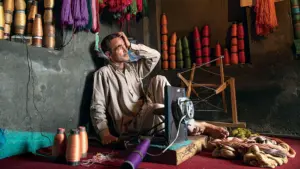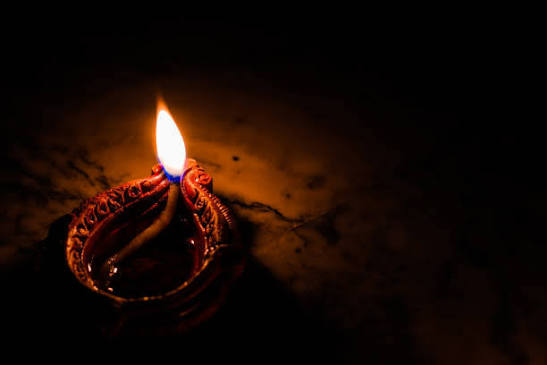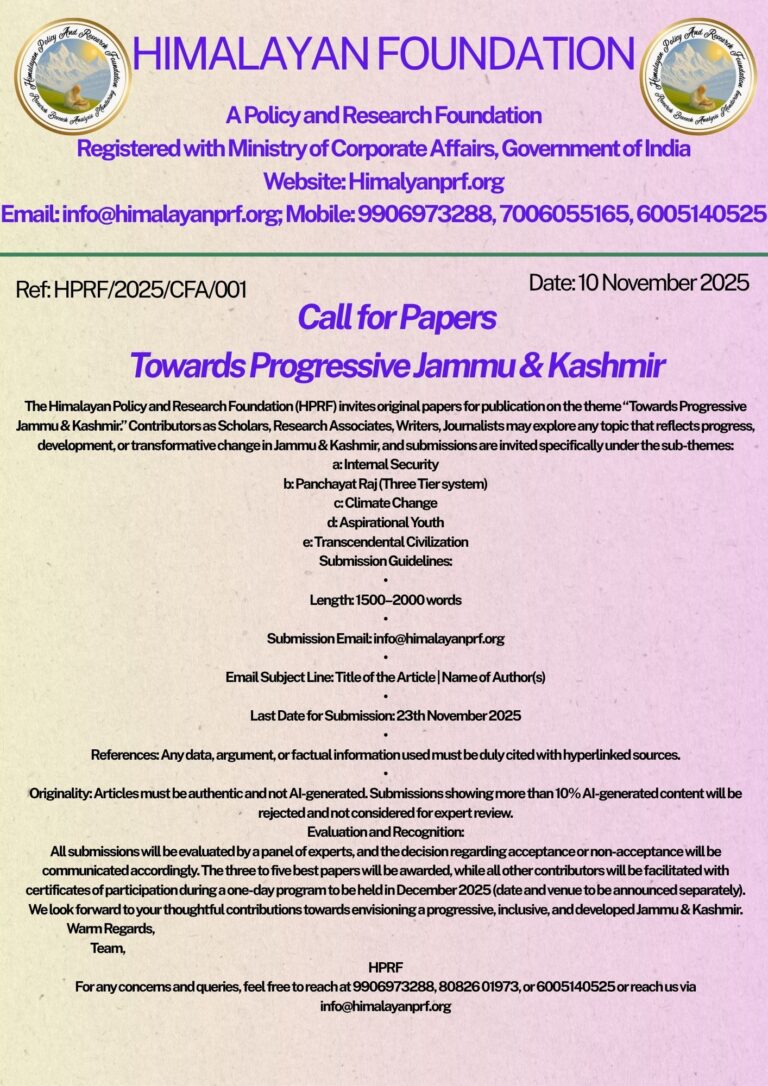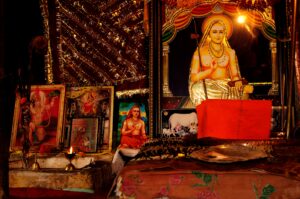Written by Sheeraz zaman ( Social Activist from jammu and kashmir India )
Divine History and Metamorphosis: The Day is Diwali
Among the festivals of the world, few shimmer with as much layered significance, mythic density, and philosophical luminosity as Diwali. What seems, at first glance, to be a carnival of lamps, sweets, and fireworks is, in truth, a civilizational meditation—a symbolic drama on the eternal tension between darkness and light, ignorance and knowledge, despair and hope. Diwali, which literally means the “row of lamps,” is more than an occasion marked on a lunar calendar; it is a rhythmic return to the essential truths of existence. It holds within its flickering lights the memory of ancient fire altars, the wisdom of the Upanishads, the dreams of exiled heroes, the songs of mystics, and the resilience of communities that refuse to let their light fade. From the earliest Vedic fires to the modern electric glow that floods cities, Diwali stands as India’s spiritual metaphor for illumination—both outward and inward.
Historically and mythologically, Diwali is not confined to one narrative. It is a confluence of multiple meanings, each radiating through the prism of India’s religious and regional diversity. For much of North India, it recalls the homecoming of Lord Rama, Sita, and Lakshmana after fourteen years of exile and the defeat of Ravana, the ten-headed symbol of arrogance and ignorance. When the people of Ayodhya lit rows upon rows of lamps to guide Rama home, they were not merely celebrating victory; they were affirming the moral law of the cosmos—that righteousness, after wandering in darkness, inevitably finds its way back to light. Every flickering flame, in that mythic retelling, becomes a votive prayer, an echo of human longing for renewal. The story’s enduring appeal lies not only in its divine grandeur but in its psychological depth: each of us, in our own way, undertakes that same journey of exile and return, battling the inner Ravanas of pride, greed, and delusion until we rediscover the quiet flame of clarity within.
Another ancient layer of Diwali’s history lies in the cosmic drama of the Samudra Manthan—the churning of the ocean of milk by gods and demons in search of amrita, the nectar of immortality. From this celestial act of creation and destruction arose Lakshmi, the goddess of wealth, beauty, and auspiciousness. Her emergence on this day connects prosperity with purity, reminding us that abundance flows only where order and balance are restored. The tradition of cleaning one’s home before Diwali, of clearing debts and adorning spaces with light and color, derives from this cosmic symbolism. It is both literal and spiritual purification—an attempt to make room for grace, to invite Lakshmi not just into the home but into the heart. The shining of lamps is therefore not mere decoration; it is a gesture of readiness, a symbolic alignment of the self with the rhythm of harmony and fortune.
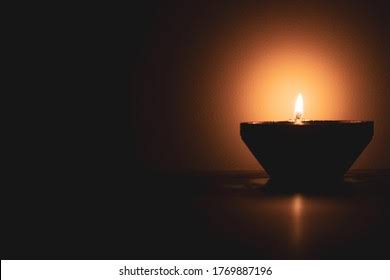
For the Jains, Diwali holds yet another profound meaning. It marks the nirvana of Lord Mahavira in 527 BCE, when the world, it is said, was bathed in a supernatural radiance. Here, the lighting of lamps does not signify material prosperity but the illumination of knowledge. It is a metaphysical reminder that true freedom arises when ignorance is extinguished. The lamp becomes a teacher—a silent metaphor that tells the seeker that enlightenment, like flame, is both fragile and potent, needing the twin disciplines of faith and vigilance. The Sikhs, too, attach deep significance to this day. Known as Bandi Chhor Divas, it commemorates Guru Hargobind Ji’s release from Mughal imprisonment, when the Golden Temple was resplendent with lights. In this interpretation, Diwali becomes a festival of liberation, an assertion of justice and spiritual sovereignty.
Across all these myths and histories runs a single thread—the triumph of light. Whether it is the divine flame of knowledge, the lamp of love, or the beacon of freedom, Diwali’s symbolism transcends time, religion, and geography. Its celebration of light is not ornamental but ontological—it reflects an understanding of existence itself as the interplay of luminosity and obscurity, of being and non-being.

The roots of this festival stretch deep into the Vedic period, when fire—Agni—was the central figure of worship. In the Rig Veda, Agni is described as the “light of all lights,” the immortal messenger between gods and men, the purifier, the witness, and the sustainer of the cosmic order. Lighting a flame was, in essence, a sacred act of connection: it linked the finite to the infinite, the human to the divine. The fire altar, or agnihotra, was the heart of domestic and public ritual. Every spark, every ember was a reminder that the universe itself is a field of luminous consciousness, that the divine presence burns quietly in the hearth of creation. Over time, as the grand fire rituals gave way to the more intimate domestic lighting of lamps, the metaphysical essence remained unchanged—the household lamp became the successor of the cosmic fire, carrying within its modest glow the same Vedic grandeur.
During the Mauryan and Gupta eras, Diwali acquired dimensions both political and artistic. Ashoka’s reign, marked by moral transformation and public welfare, saw lamps being lit as symbols of civic joy and renewal. Under the Guptas, the festival flourished as a celebration of literature, art, and prosperity. Cities gleamed with light not only in devotion but as expressions of aesthetic sophistication. The flame, once confined to the altar, now adorned poetry, music, and sculpture. Diwali thus became a civilizational metaphor: the light of Agni evolved into the light of culture, intellect, and human creativity.
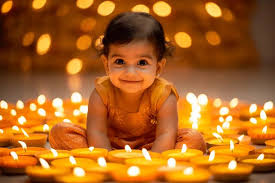
By the medieval period, the Bhakti and Sufi movements reinterpreted the symbolism of light in deeply personal and mystical ways. Bhakti poets like Tulsidas and Mirabai sang of the jyoti within the heart—the lamp of devotion that dispels the darkness of ego and unites the soul with the divine. The act of lighting a diya became an interior practice, a ritual of awakening: “Dip jale hriday mein”—let the light burn in the heart. Simultaneously, Sufi mystics embraced the same metaphor in the language of ishq (divine love). The lamp at the dargah and the chirag in the shrine became emblems of longing, the flame a symbol of annihilation in the beloved. Thus, in the shared imagination of Hindu and Muslim mystics, the lamp became the meeting point of love and realization, where form and formlessness dissolve in the same radiance.
This interreligious cross-pollination is not accidental. The symbolism of light has always been universal, resonating across traditions. In Hinduism, jyoti is not a mere physical phenomenon but a metaphysical principle. The Upanishads declare that Brahman—the ultimate reality—is “the light of lights” (jyotisham jyotih), that which illumines all without being illumined by another. To seek light, therefore, is to seek truth; to kindle a flame is to affirm one’s participation in the cosmic act of revelation. The prayer from the Brihadaranyaka Upanishad, tamaso mā jyotir gamaya—“Lead me from darkness to light”—captures the essence of Diwali’s aspiration. Here, darkness stands not for evil but for ignorance, for the unawakened state of being. Light, in contrast, is consciousness, self-knowledge, the unveiling of the real. Every lamp lit on Diwali is a miniature enactment of this metaphysical drama.
The lamp’s structure itself is symbolic. The flame represents aspiration, ever rising upward toward the source; the oil stands for human effort and discipline; the wick symbolizes the mind, which, when soaked in devotion, sustains the flame of realization; and the light that emerges is the purified soul, radiant and steady. In this symbolism lies Hinduism’s characteristic synthesis of ritual and philosophy: even the simplest act—lighting a lamp—becomes an allegory for spiritual ascent.
The theme of light as divine consciousness finds echoes across world religions. In Christianity, Christ is hailed as the “Light of the World,” a light that shines in the darkness and cannot be overcome. The Gospel of John speaks of “the true light that gives light to everyone,” resonating with the Hindu idea of the self-luminous Atman. In Islam, the Ayat an-Nur (24:35) describes God as the light of the heavens and the earth, whose light is “like a niche within which is a lamp.” The imagery is strikingly close to the Upanishadic understanding of the divine as self-illumining awareness. In Buddhism, the lamp signifies the flame of wisdom that dispels the darkness of craving and ignorance; the Dipankara Buddha, whose very name means “the lamp bearer,” is a symbol of awakening. In Sikhism, Guru Nanak speaks of the divine light within all beings, man tu jyot sarup hai (“O mind, you are the embodiment of light”). Even in Zoroastrianism, the eternal flame represents Ahura Mazda’s wisdom and purity. Thus, light, as a symbol, transcends doctrinal boundaries. It becomes the universal language of the sacred, a shared intuition that truth reveals itself as radiance.
In Diwali, this shared symbolism converges into a luminous celebration. The festival is not only an external illumination of cities and homes but a collective affirmation of humanity’s inner luminosity. Carl Jung once observed that the human psyche projects its deepest symbols into rituals, and the motif of light, in every culture, signifies the self’s movement toward wholeness. Diwali, then, is not just an Indian festival; it is a psychological archetype—the annual re-enactment of the soul’s victory over its own shadow. Each diya lit is a neuron of consciousness firing, a collective reminder that the journey toward enlightenment is never solitary.

Nowhere is this symbolism more poignant than in the Diwali of Kashmir. As the chill of autumn descends upon the valley and the Chinars turn to gold and copper, the Kashmiri Pandits prepare for the festival with quiet devotion. Their celebration is subdued yet deeply resonant. Homes are swept clean and smeared with clay, courtyards are lined with rows of tiny lamps, and saffron-scented prayers fill the air. Lakshmi Puja is performed with rice, walnuts, and bronze vessels, earth’s own symbols of plenty. Children float small lamps down the Jhelum in a ritual known as Deepdan, believing that the river carries their light to the divine. The reflection of flickering flames on the still waters turns Srinagar and Anantnag into floating constellations of faith.
This was once a festival of shared warmth, Muslim neighbors visiting with sweets, joining in the glow of community. But history, with its cruelties, cast a shadow. The exodus of the Pandits in the 1990s turned Diwali into an act of exile and remembrance. In refugee camps of Jammu and Delhi, families lit lamps in tin cups, recreating the glow of homes they could no longer return to. Each flame was both grief and defiance, mourning and prayer. The words often whispered, Asata niv divas, tula divas, “let this not just be a day of light but of awakening”, echoed the Upanishadic plea for illumination. Even scattered across the world, from Pune to Prague, Kashmiri Pandits kept the tradition alive, their lamps reflecting in distant waters the memory of the Jhelum. For them, Diwali remains a dialogue with loss, a stubborn assertion that even in exile, light survives.
This enduring faith reveals the philosophical depth of the festival. Diwali’s radiance is not dependent on circumstance or geography; it arises from the conviction that light is intrinsic to being itself. In the Bhagavad Gita, Krishna declares, “Among lights, I am the radiant sun.” Light here is not metaphorical but ontological, it is the nature of divinity and, by extension, of the self. To participate in Diwali is to remember this truth: that the same radiance which illumines the stars also burns in the heart of man.
The festival’s environmental and ethical dimensions extend from this understanding. In earlier times, Diwali was gentle upon the earth—its lamps of clay, oils drawn from seeds, decorations made of leaves and flowers. The light it spread was not the blinding glare of consumption but the soft glow of gratitude. Modernity, with its noise and artificial glitter, risks distorting this harmony. Yet even amid electric lights and digital screens, the essence remains retrievable. To celebrate Diwali responsibly today is to reawaken the ecological wisdom embedded in its origins, to honor the balance between light and life, to ensure that illumination does not come at the cost of the planet’s wellbeing. The truest lamp is the one that shines without burning too much.
In the contemporary world, Diwali has transcended India’s borders to become a global festival. From London’s Trafalgar Square to New York’s Times Square, from Singapore to Durban, its message resonates: hope, renewal, and the enduring victory of light. Its global spread is not cultural dilution but spiritual expansion, the recognition that in a fragmented world, the symbolism of light remains a common heritage. Amidst global uncertainties, Diwali whispers a gentle reassurance: that darkness, however vast, is never absolute; that the smallest flame is enough to begin again.
Yet beyond all grandeur, markets, and fireworks, the deepest Diwali unfolds within. After the last lamp is lit and the night glows like a starry sea, one senses that the festival’s true stage is inward. The sweeping of homes mirrors the clearing of the mind; the settling of debts becomes the forgiveness of old grudges; the lighting of lamps mirrors the rekindling of compassion and wisdom. Diwali, at its heart, is the metamorphosis of the self—the movement from dispersion to wholeness, from forgetfulness to

remembrance.
In its simplest yet most profound sense, the festival teaches that light is not an external entity to be worshipped but an inner state to be realized. The Chandogya Upanishad declares, “This light shines beyond the heavens, beyond all things, and within the heart of man.” When one lights a diya, one symbolically participates in that infinite illumination, acknowledging that what shines in the cosmos also shines within the self.
And so, every Diwali is a reminder that the cosmos is not indifferent but luminous, that the human story, of struggle, fall, and renewal, is mirrored in the cosmic dance of light. From Rama’s triumphant return to Ayodhya, to Lakshmi’s emergence from the churning seas, from Mahavira’s liberation to the exile of Kashmiri Pandits, from the Vedic altar to the glowing skyline of a modern city, the story repeats in countless forms, yet the message is one. Light is not a symbol we invented; it is the essence we rediscover.
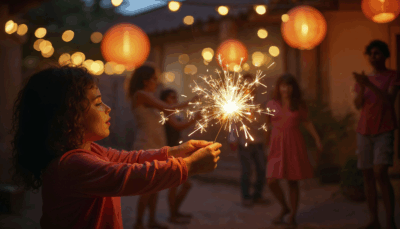
When you light your lamp this Diwali, it is worth remembering that you are not merely dispelling the darkness of a room, you are re-enacting the oldest human prayer, the eternal aspiration of consciousness toward clarity. You are affirming that, despite the shadows of history, despite loss and noise and confusion, the universe remains radiant at its core. The flame in your hand is the same fire that blazed in the Vedic altar, the same that shone on Rama’s return, the same that glowed in the hearts of mystics and the eyes of the exiled.
For as long as even a single lamp burns in faith, the universe is not in darkness. That is the true message of Diwali, not a festival bound to a season, but a state of awakening. It is the realization that illumination is not bestowed but remembered, not outside but within. Diwali’s lamps, therefore, are mirrors of the soul, each one a spark of the infinite, each one whispering across centuries the same truth: that the light you seek has always been your own.



